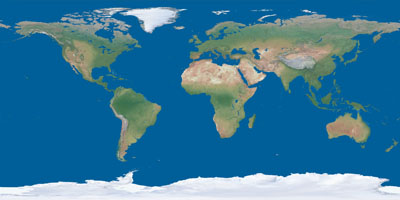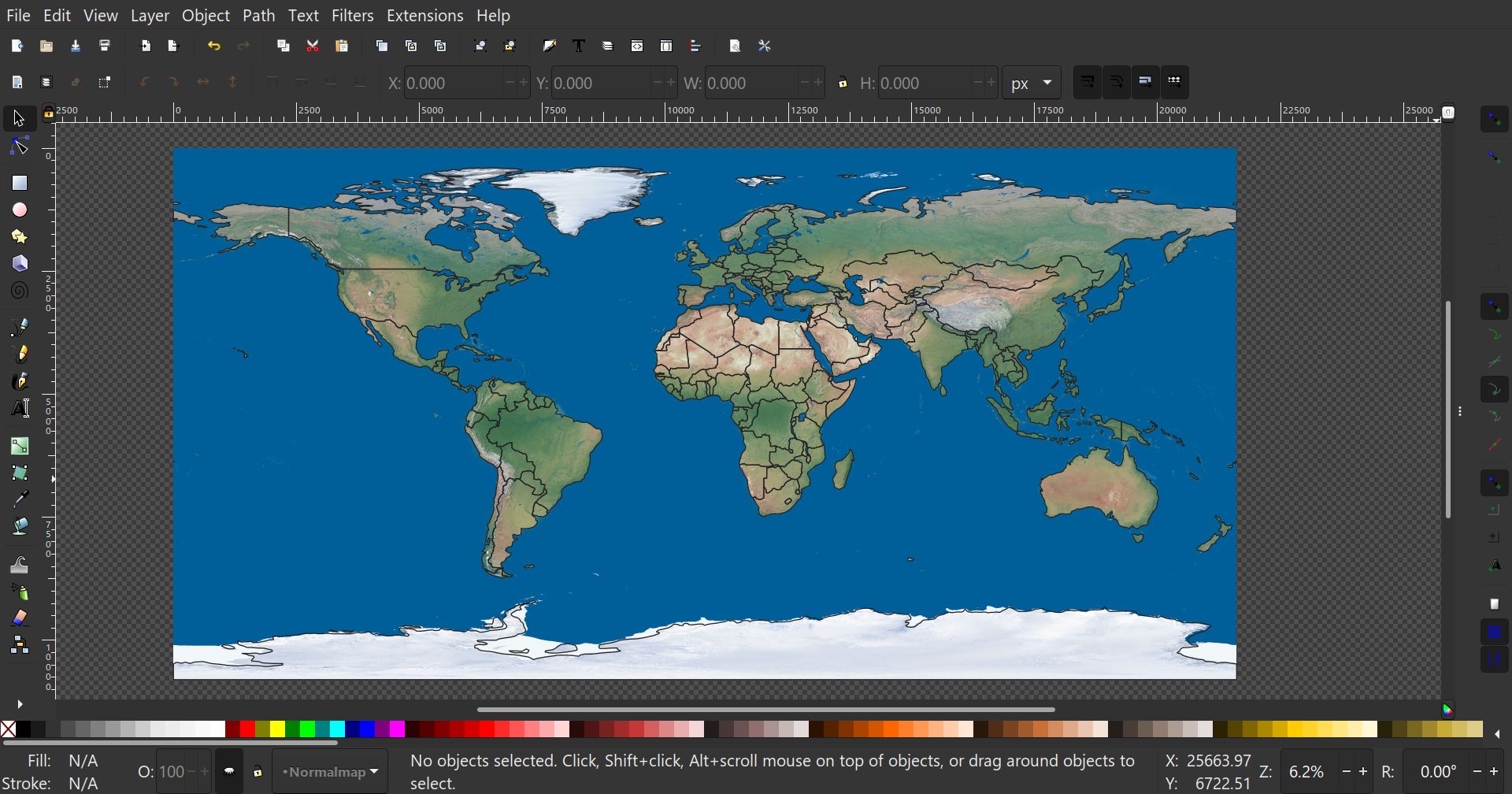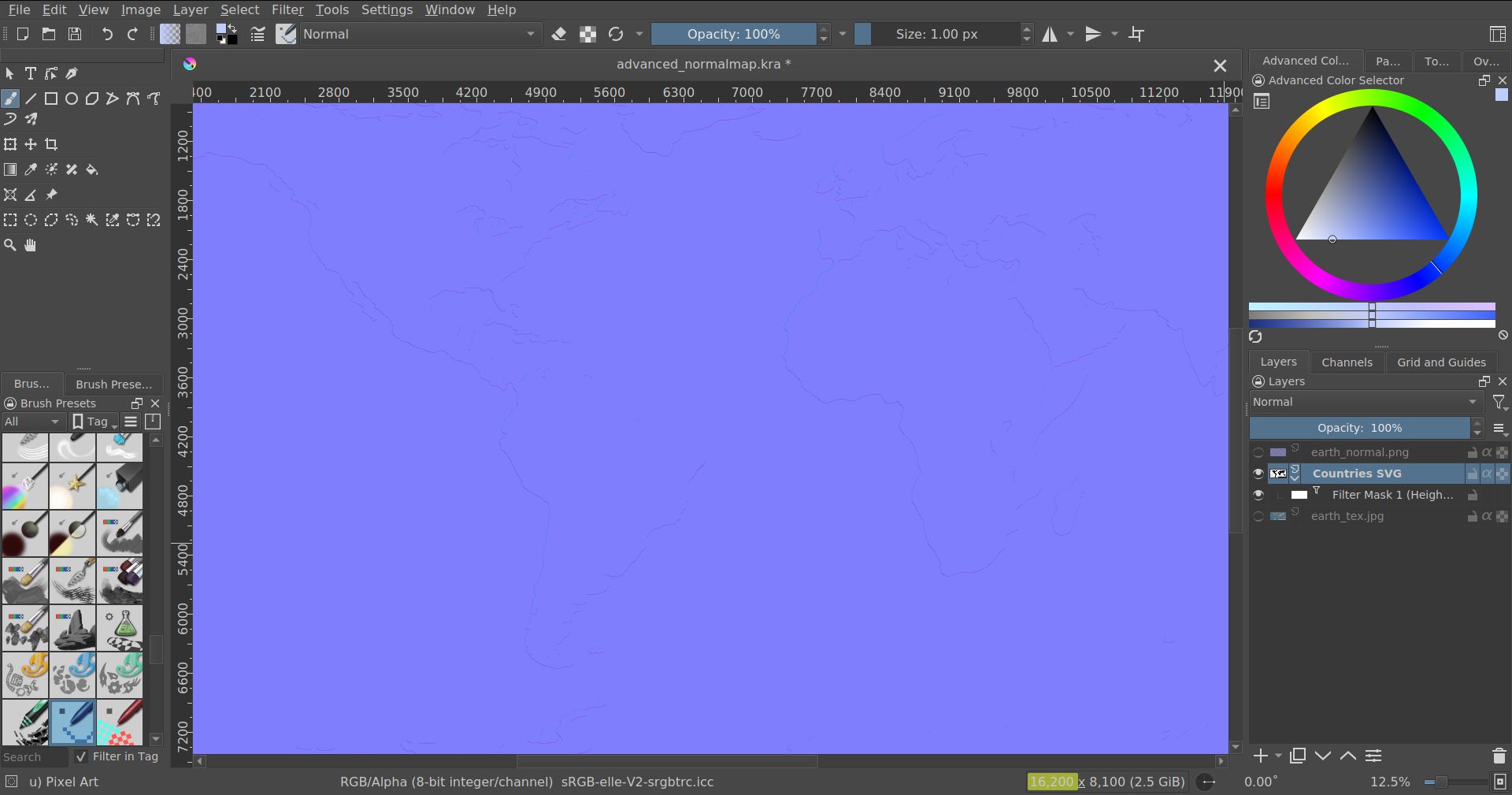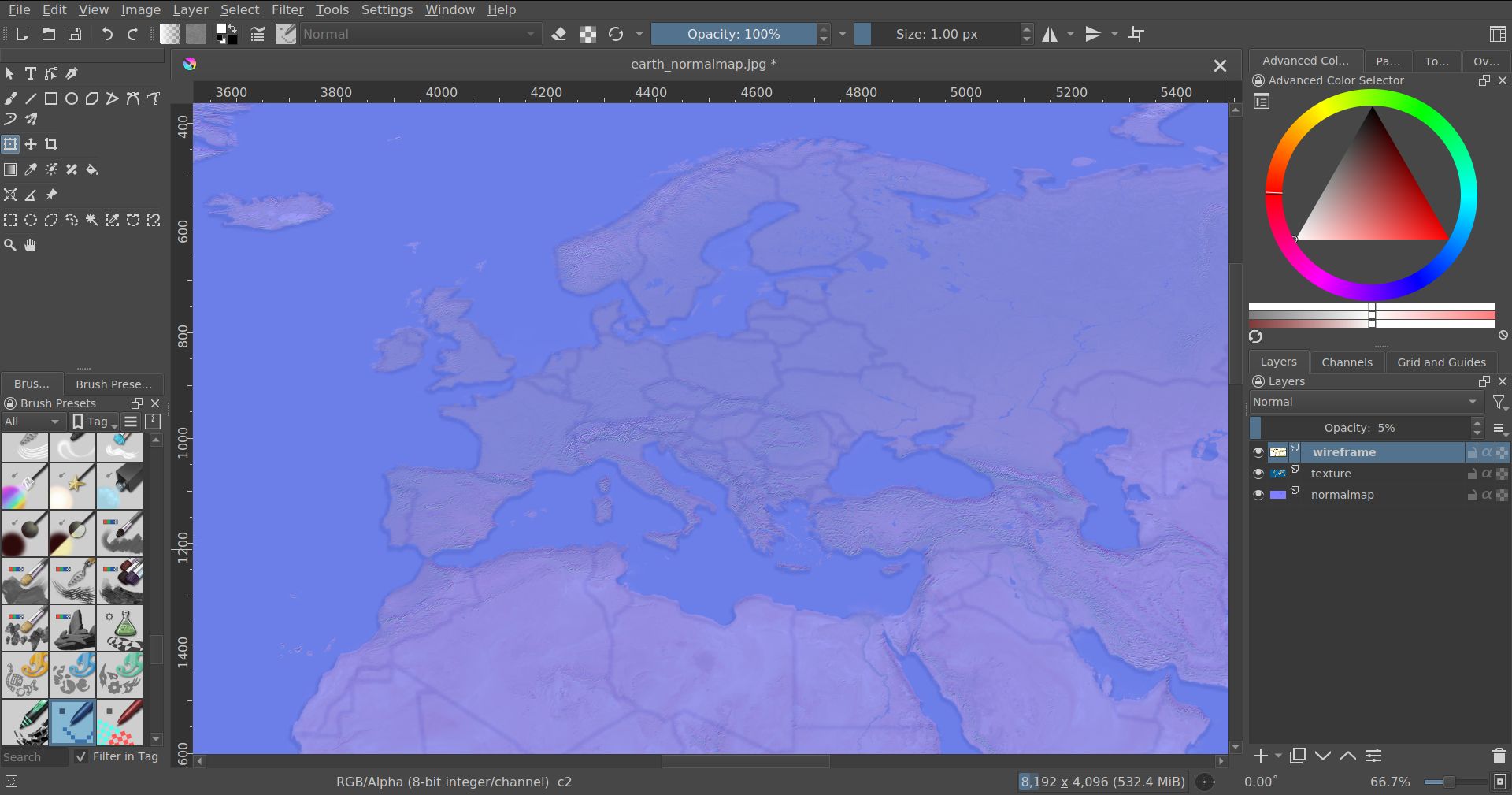Finding the right resources
It took me several days to find resources that could fit together. Sometimes I could find a beautiful earth texture, but the SVGs files of the countries in Wikimedia didn’t fit. Finding a normal map to fit the texture was another challenging task. I did several combinations and weird things, but I have something good enough to work with.
Texture Map
Natural Earth III - A beautiful texture by Tom Patterson. According to the license: All Natural Earth III data (and images) found on this website are in the public domain.
I’m using “Earth without clouds or Arctic Ocean ice”.
 Earth without clouds or Arctic Ocean ice
Earth without clouds or Arctic Ocean ice
Normal Map
Highend3d - I’m not 100% about this, but it’s fine for now. At the time of writing, the license is MIT.
 Download the original to see the difference in pixels
Download the original to see the difference in pixels
Countries SVG
That took me the longest, and it includes two steps.
- Wikimedia's SVGs require heavy modifications. Natural Earth Data fits the most with common earth textures (and normal maps). However, you need to have GIS software such as QGIS. Thanks again to Tom Patterson and the various contributors behind this project. License: Public domain. Here's a direct link to the data I'm using. Also, an essential introduction to using it within QGIS. However, when you are about to export the SVG newer methods can make your life easier.
- Since the normal map I have doesn't emphasize the continents' depth, we can only see high terrains on the continents. As a result, the oceans and the continents seem like they are on the same height level. A quick fix is to create a normal map in Krita using the SVG from the previous step. Then we combine it with the normal map we have.
 SVG fits almost perfectly
SVG fits almost perfectly
 Generating a normal map in Krita from the SVG file. Combines with the original normal map, 37% opacity
Generating a normal map in Krita from the SVG file. Combines with the original normal map, 37% opacity
 Combination of wireframe (Countries SVG), normalmap and texture
Combination of wireframe (Countries SVG), normalmap and texture
Perhaps using Inkscape is faster since, eventually, I’ll need to edit each country separately.